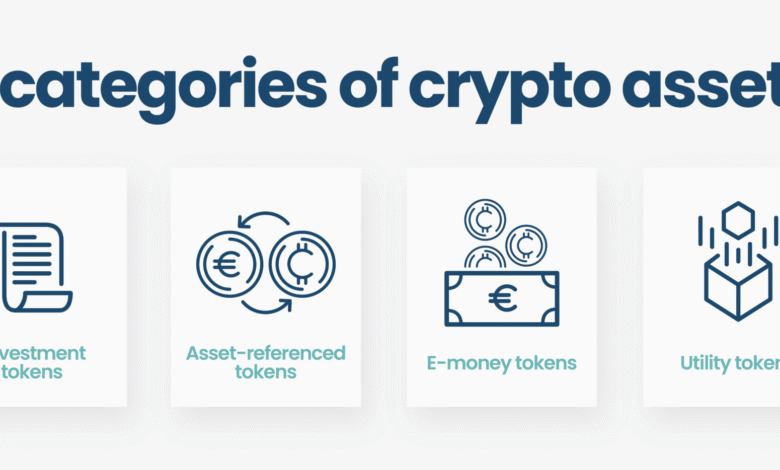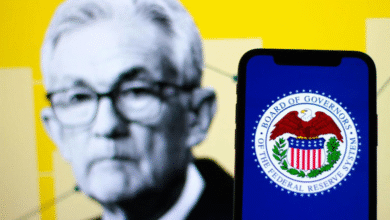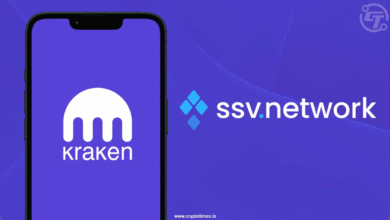Crypto Assets Not Securities: Hester Peirce’s Perspective

In a groundbreaking discussion, SEC Commissioner Hester Peirce asserted that most crypto assets are not securities, challenging prevailing regulatory views. Speaking at the “SEC Speaks” event, Peirce highlighted the necessity for a thoughtful approach to crypto regulation that recognizes the unique attributes of decentralized assets. Unlike former SEC Chairman Gary Gensler, who classified a vast majority of tokens as securities, Peirce advocates for a clear distinction based on economic realities and their functional evolution. This perspective emphasizes the need for a safe harbor approach, allowing crypto assets to transition from securities status as they mature. The implications of her stance on crypto securities classification could reshape the landscape of SEC crypto regulation, promoting innovation while ensuring compliance with legal frameworks.
Entering the realm of digital currencies, the dialogue surrounding the classification of these innovative monetary forms has never been more critical. With the growing discourse on the regulation of blockchain-based tokens, understanding how they differ from traditional securities is paramount. The ideas put forth by figures such as Hester Peirce not only redefine regulatory perspectives but also propose frameworks that could benefit the entire crypto ecosystem. This involves recognizing the transitional nature of crypto assets, assessing their roles within decentralized finance, and cultivating an environment that fosters growth and innovation without stifling development. As the conversation evolves, so too must our interpretations of what constitutes regulated financial instruments in the digital age.
Understanding Hester Peirce’s Perspective on Crypto Assets
SEC Commissioner Hester Peirce, known as ‘Crypto Mom,’ has long been an advocate for the cryptocurrency space. Her comments during the recent ‘SEC Speaks’ event highlight a significant shift in perspective regarding the classification of crypto assets. Unlike her predecessor Gary Gensler, who asserted that the majority of crypto tokens are securities, Peirce argues that most existing crypto assets are not securities. This distinction is crucial as it could pave the way for a more accommodating regulatory environment, fostering innovation within the decentralized finance ecosystem.
Peirce’s insights emphasize the importance of understanding the economic realities surrounding crypto assets. She articulates that many tokens, particularly those used for funding network development, may initially be classified as securities but should not necessarily retain that status indefinitely. This nuanced approach recognizes the evolving nature of decentralized platforms and signals a need for a regulatory framework that adapts as these technologies mature.
The Need for Regulatory Clarity in the Crypto Space
The regulatory landscape for cryptocurrencies has often been fraught with uncertainty, particularly under the previous leadership of the SEC. Peirce’s statement that the SEC will pursue clarity rather than enforcement signifies a potential turning point in how crypto regulations are formulated. By instituting a safe harbor for crypto assets, there is an opportunity to distinguish between true securities and decentralized assets that should be treated differently under the law. This could encourage more investors and developers to engage with cryptocurrency markets without the fear of regulatory backlash.
Peirce’s proposal suggests that certain tokens may emerge from their initial classification as securities if they evolve into a decentralized network. This safe harbor approach is aimed at reducing the chilling effect of regulation by enforcement, which has previously stifled innovation. By focusing on developmental milestones rather than merely the nature of the tokens, the SEC could encourage a thriving environment for new technologies, aligning with Peirce’s vision of a collaborative regulatory framework.
Deconstructing the Crypto Securities Classification Debate
The ongoing debate regarding the classification of cryptocurrencies as securities often leads to confusion and frustration within the industry. Peirce’s comments shed light on this discussion by asserting that the majority of current crypto assets should not be classified under securities laws. This viewpoint underscores the complexity of the financial ecosystem in which these digital assets operate, where economic and technological factors both play significant roles in determining their status.
The challenge lies in defining the characteristics of crypto assets in a way that aligns with existing legal frameworks. Peirce’s stance advocates for a more flexible interpretation, allowing for innovation without unnecessary regulatory burdens. By focusing on the economic utility of tokens, rather than rigid legal definitions, there’s the potential for a more robust classification system that recognizes the unique aspects of decentralized assets.
Hester Peirce’s Safe Harbor Proposal for Decentralized Assets
Peirce’s safe harbor proposal aims to provide a structured framework within which crypto assets can evolve without being immediately classified as securities. This proposal, initially introduced in 2020 and refined in 2021, emphasizes the transitional nature of many tokens. By allowing a grace period where these assets can develop and put in place decentralized governance, Peirce hopes to foster an environment that encourages innovation while still addressing regulatory concerns.
The safe harbor concept not only protects developers but also provides clarity for investors who may be wary of the potential securities designation. Understanding that a token’s status might change over time if the network matures translates into greater investor confidence. This approach not only alleviates fears of premature regulation but also aligns with Peirce’s vision for a regulatory landscape that supports innovation in the rapidly evolving crypto space.
The Impact of SEC Regulation on the Crypto Industry
The SEC’s historically aggressive stance toward cryptocurrency has painted it as a foe of innovation within the space. Peirce’s contrast with Gensler’s enforcement-heavy approach underlines the detrimental impact such regulations can have on an emerging industry. By pushing for an inclusive regulatory framework, Peirce is advocating for an SEC that acts as a partner rather than an adversary, suggesting a significant cultural shift within the agency.
This pivot toward more constructive regulation could rejuvenate the crypto sector, encouraging potential entrepreneurs and investors who have been hesitant due to the fear of legal repercussions. Clear guidelines, such as those proposed in the safe harbor framework, would enable crypto projects to flourish while still maintaining compliance with necessary regulations, fostering a more innovative ecosystem overall.
Economic Realities versus Legal Definitions in Crypto Regulation
Peirce emphasizes the need for a regulatory perspective that respects the economic realities of cryptocurrency, rather than strictly adhering to traditional legal definitions of securities. This distinction is paramount as it allows regulators to account for the unique characteristics of decentralized assets. Recognizing that economic functionality can vary significantly across different crypto assets ensures that regulations can be tailored to fit the evolving nature of this industry.
The complexities of blockchain technology and the decentralized finance model necessitate a more sophisticated regulatory framework. By focusing on the practical use cases and economic implications of crypto assets, regulators can develop a more nuanced approach that acknowledges the innovations driving this space forward while also safeguarding investors and the market at large.
Hester Peirce’s Vision for Future SEC Engagement
As the SEC embarks on a journey toward clearer cryptocurrency regulations, Peirce’s vision of a proactive and engaging regulatory body is vital. Her commitment to providing clarity rather than enforcing regulations through punitive measures stands to transform the relationship between the SEC and the crypto industry. If executed well, this approach could lead to a more cooperative regulatory environment that prioritizes both investor protection and innovation.
Peirce’s remarks indicate a desire for the SEC to take an informed and empathetic stance when engaging with digital asset stakeholders. By fostering dialogue and understanding the unique challenges and opportunities presented by cryptocurrencies, the SEC can better position itself to provide useful guidance that serves both the industry and the public interest.
Decentralized Assets and the Future of Financial Innovation
The rise of decentralized assets marks a pivotal moment in the evolution of financial systems. Peirce’s belief in the potential of these innovations is echoed by many industry leaders who see decentralized finance as a means to democratize access to financial services. This evolution calls for regulations that both embrace innovation and protect consumers, ensuring a balanced approach that fosters growth.
As we navigate this new landscape, the role of regulators is crucial. Peirce’s safe harbor concept is a step towards reconciling the needs of traditional finance with the emergent decentralized paradigm. By recognizing the potential for tokens to transition from securities to freely tradable assets, regulators can create a future where financial innovations thrive alongside existing financial frameworks.
The Role of Leadership in Shaping Crypto Regulation
Leadership within regulatory bodies plays a critical role in shaping the direction of crypto regulation. Hester Peirce’s advocacy for a more supportive regulatory environment reflects a significant shift in priorities within the SEC. With leaders like Peirce, who promote understanding and cooperation rather than confrontation, the potential for positive change in crypto regulation becomes increasingly likely.
The influence of transparent and visionary leadership will be crucial in establishing regulations that not only provide clarity to market participants but also encourage continuous innovation. As the industry matures, having leaders who champion forward-thinking approaches will help the SEC maintain its relevance in a rapidly evolving financial landscape.
Frequently Asked Questions
What does Hester Peirce mean by most crypto assets not being securities?
Hester Peirce, known for her progressive stance on cryptocurrencies, argues that the majority of crypto assets currently available do not qualify as securities. This perspective challenges the SEC’s traditional classification, emphasizing that many decentralized assets are designed for utility in their respective ecosystems rather than investment purposes.
How does Hester Peirce propose regulating crypto assets not classified as securities?
Hester Peirce suggests a ‘safe harbor’ framework that allows certain crypto assets to initially be classified as securities but not fall under securities laws during a grace period. This approach recognizes the evolving nature of decentralized assets, enabling them to transition from securities to non-security status as they become more functional and decentralized.
Why is the SEC’s regulation by enforcement criticized by Hester Peirce?
Hester Peirce criticizes the SEC’s regulation by enforcement approach for stifering innovation within the crypto sector. She believes this method has turned the SEC into an adversary of the crypto industry, preventing a clearer understanding and classification of crypto assets that should not be treated as securities.
What is the significance of Peirce’s comments on decentralized assets and their security status?
Peirce’s remarks highlight the importance of distinguishing between decentralized assets and traditional securities. By asserting that most crypto assets do not fall into the securities category, she advocates for a regulatory environment that fosters innovation and provides clarity on how these assets can be integrated into the existing financial ecosystem.
What are the implications of Hester Peirce’s safe harbor proposal for crypto asset creators?
The implications of Peirce’s safe harbor proposal would provide crypto asset creators with a framework to launch projects without the immediate fear of regulatory penalties associated with securities classification. This grace period would allow for the development and decentralization of their networks, ultimately clarifying their status and permitting broader participation in the market.
How might regulatory clarity in the classification of crypto assets benefit investors?
Regulatory clarity in the classification of crypto assets can instill greater confidence among investors. When assets are clearly defined as not being securities, it reduces legal uncertainties and potential liabilities, thereby encouraging investment and participation in the crypto market.
What challenges does the SEC face in defining the status of crypto assets?
The SEC faces challenges defined by the evolving nature of crypto assets and inconsistent interpretations of securities laws. Hester Peirce points out that the distinction between what constitutes a security and what does not is often unclear, complicating the regulatory landscape for decentralized assets.
How does Peirce’s perspective on crypto assets impact the future of crypto regulation?
Peirce’s perspective has the potential to significantly impact the future of crypto regulation by advocating for a more open and supportive regulatory framework. If adopted, her views could lead to greater innovation in the crypto space and a shift towards regulations that prioritize clarity and flexibility for decentralized assets.
| Key Point | Details |
|---|---|
| SEC Commissioner Hester Peirce’s Perspective | Peirce believes most crypto assets are not securities, opposing the previous SEC Chairman Gary Gensler’s views. |
| ‘Safe Harbor’ Framework Proposal | Peirce proposed a framework that allows some tokens to be classified as non-securities after a grace period once their networks become sufficiently decentralized. |
| Contrast with Gensler’s Approach | Gensler favored regulation by enforcement, while Peirce advocates for regulatory clarity. |
| Historical Reference | Peirce tied her views to the American Revolution, comparing her stand to that of hero Samuel Whittemore’s fight for freedom. |
| Future SEC Direction | The SEC aims to provide clear regulatory guidance rather than just enforce regulations. |
Summary
In her recent address, SEC Commissioner Hester Peirce emphasized that crypto assets are not securities, offering a fresh perspective in the ongoing regulatory discourse. Unlike her predecessor, Gary Gensler, who classified most tokens as securities, Peirce champions a safe harbor approach. This approach allows for the possibility that some tokens, initially issued as securities, could be reclassified as non-securities as their networks develop and decentralize. By proposing regulatory clarity, she aims to foster innovation within the cryptocurrency industry. The SEC, under her vision, is set on a path that prioritizes guidance and understanding over strict enforcement, which could significantly benefit the crypto market as it navigates the complex regulatory landscape.




